
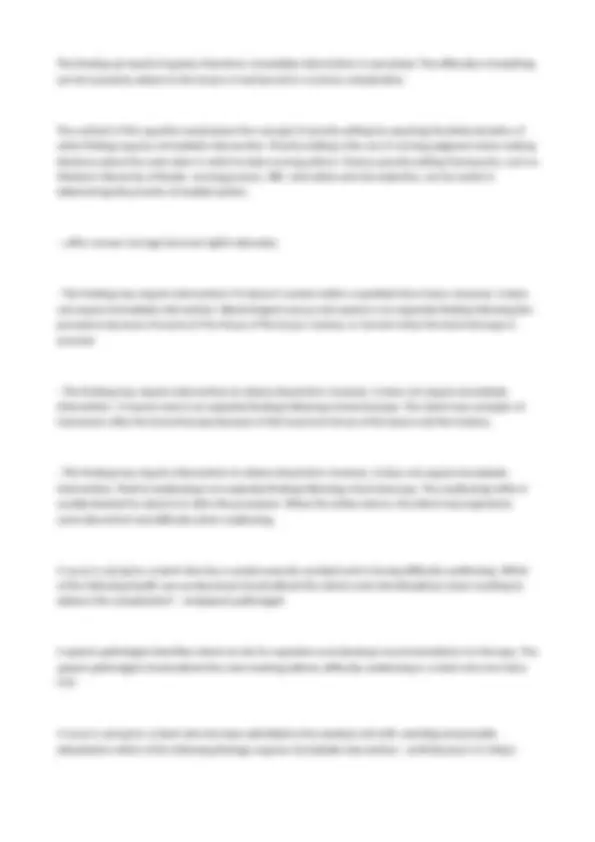
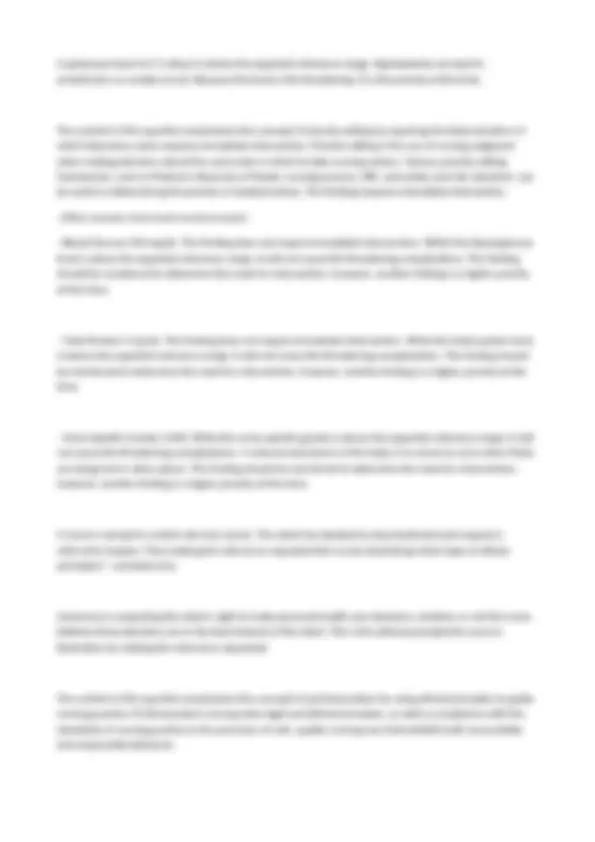
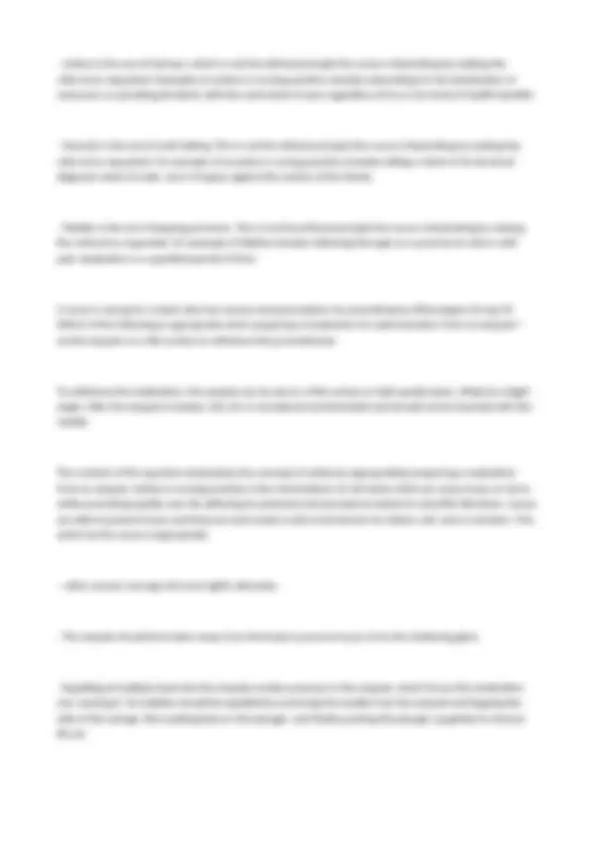
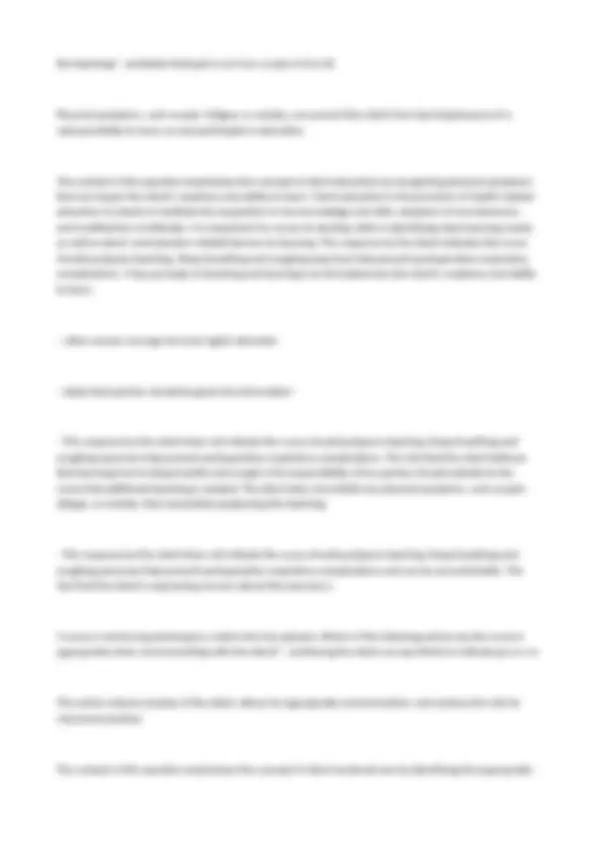
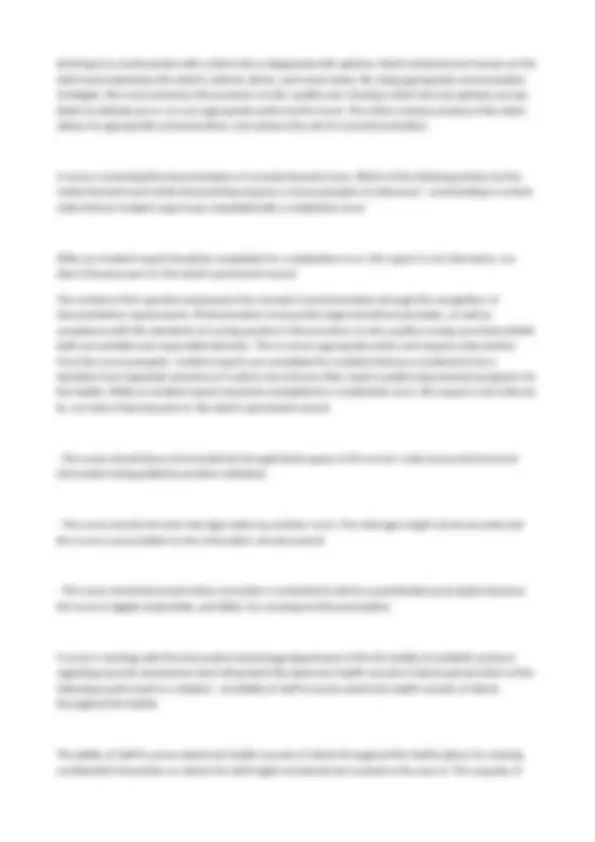
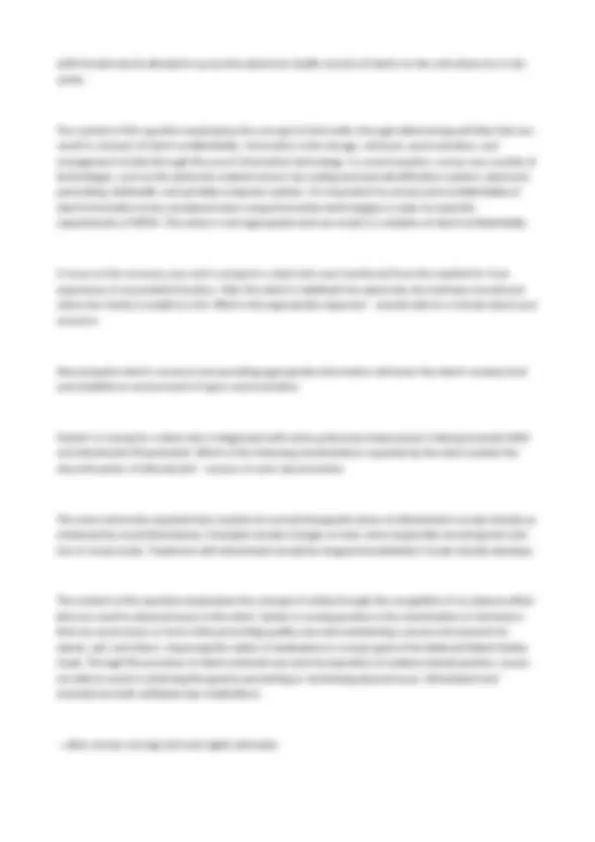


Study with the several resources on Docsity

Earn points by helping other students or get them with a premium plan


Prepare for your exams
Study with the several resources on Docsity

Earn points to download
Earn points by helping other students or get them with a premium plan
Community
Ask the community for help and clear up your study doubts
Discover the best universities in your country according to Docsity users
Free resources
Download our free guides on studying techniques, anxiety management strategies, and thesis advice from Docsity tutors
NurseLogic 2.0 Nursing Concepts Beginning Test Questions and Answers A nurse discovers that a client who is diagnosed with dementia received the wrong medication. Which of the following should be the nurse's first action? - ansDetermine the client's condition The client is the immediate concern, and determining his condition is crucial to the delivery of safe, effective care. The content of this question emphasizes the concept of safety by following the appropriate steps after a medication administration error. Safety in nursing practice is the minimization of risk factors that can cause injury or harm while promoting quality care and maintaining a secure environment for clients, self, and others. By ensuring clients remain the top priority in the provision of care, nurses are able to assist in achieving National Patient Safety Goals, preventing or minimizing physical injury. This is the first action the nurse should take when discovering a medication error.
Typology: Exercises
1 / 11

This page cannot be seen from the preview
Don't miss anything!







A nurse discovers that a client who is diagnosed with dementia received the wrong medication. Which of the following should be the nurse's first action? - ansDetermine the client's condition The client is the immediate concern, and determining his condition is crucial to the delivery of safe, effective care. The content of this question emphasizes the concept of safety by following the appropriate steps after a medication administration error. Safety in nursing practice is the minimization of risk factors that can cause injury or harm while promoting quality care and maintaining a secure environment for clients, self, and others. By ensuring clients remain the top priority in the provision of care, nurses are able to assist in achieving National Patient Safety Goals, preventing or minimizing physical injury. This is the first action the nurse should take when discovering a medication error. ~Other answers (not most correct answer):
ages 40 or older should have annual mammograms.
A potassium level of 2.5 mEq/L is below the expected reference range. Hypokalemia can lead to arrhythmia's or cardiac arrest. Because this level is life threatening, it is the priority at this time. The content of this question emphasizes the concept of priority setting by requiring the determination of which laboratory value requires immediate intervention. Priority setting is the use of nursing judgment when making decisions about the rank order in which to take nursing actions. Various priority setting frameworks, such as Maslow's Hierarchy of Needs, nursing process, ABC, and safety and risk reduction, can be useful in determining the priority of needed actions. This finding requires immediate intervention. ~Other answers (not most correct answer):
Celecoxib (Celebrex) is a non-steroidal anti-inflammatory, cyxlooxygenase-2 (COX-2) inhibitor, which is indicated to relieve some manifestations caused by rheumatoid arthritis and osteoarthritis in adults. Celecoxib contains a sulfa molecule; therefore, celecoxib is contraindicated in clients who have an allergy to sulfa A nurse is reinforcing teaching about HIV with a group of high school students. Which of the following information is appropriate for the nurse to include - ansInitial HIV symptoms are often similar to the flu HIV infection consists of three stages. The client typically experiences flu-like symptoms in the first or primary infection stage. Then, during the clinical latency stage, the client is asymptomatic. The final stage is characterized by the development of AIDS, which is when the client becomes symptomatic and has a severely compromised immune system The content of this question emphasizes the concept of client education by determining information that is appropriate to include in an educational program. Client education is the provision of health-related education to clients to facilitate the acquisition of new knowledge and skills, adoption of new behaviors, and modification of attitudes. It is important that information provided in educational programs be both useful to the client and based on current evidence. This is appropriate for the nurse to include. A nurse is reinforcing teaching about performing suctioning to a client who is being discharged following a tracheostomy. Which of the following behaviors of the client indicates that teaching has been effective? - ansDemonstrating independent performance of the procedure Return demonstration is the best evaluation tool for psycho-motor learning, which is the acquisition of knowledge or skills that integrate mental and muscular activity. A nurse is reinforcing teaching about trans dermal nitroglycerin (Nitro-Dur) to a client who is stable angina. Which of the following indicates teaching has been effective? - ansThe patch should be effective within one hour of being applied Upon application of the patch, the medication becomes effective within 20 to 60 min and lasts until the patch is removed. A nurse is reinforcing teaching by demonstrating deep breathing and coughing exercises to a client who is scheduled for abdominal surgery. Which of the following responses by the client should the nurse postpone
the teaching? - ansStates that pain is an 8 on a scale of 0 to 10 Physical symptoms, such as pain, fatigue, or anxiety, can prevent the client from learning because of a reduced ability to focus on and participate in education The content of this question emphasizes the concept of client education by recognizing physical symptoms that can impair the client's readiness and ability to learn. Client education is the provision of health-related education to clients to facilitate the acquisition of new knowledge and skills, adoption of new behaviors, and modification of attitudes. It is important for nurses to develop skills in identifying client learning needs, as well as client- and educator-related barriers to learning. This response by the client indicates the nurse should postpone teaching. Deep breathing and coughing exercises help prevent postoperative respiratory complications. A key principle of teaching and learning is to first determine the client's readiness and ability to learn. ~ other answer (wrong/not most right) rationales:
staff should only be allowed to access the electronic health records of clients on the unit where he or she works The content of this question emphasizes the concept of informatics through determining activities that can result in a breach of client confidentiality. Informatics is the storage, retrieval, communication, and management of data through the use of information technology. In current practice, nurses use a variety of technologies, such as the electronic medical record, bar coding and auto-identification systems, electronic prescribing, telehealth, and portable computer systems. It is important for privacy and confidentiality of client information to be considered when using information technologies in order to meet the requirements of HIPAA. This action is not appropriate and can result in a violation of client confidentiality A nurse on the coronary care unit is caring for a client who was transferred from the medical for from experience of myocardial infraction. After the client is stabilized she asked why she had been transferred where her family is unable to visit. What is the appropriate response? - ansLets talk for a minute about your concerns Discussing the client's concerns and providing appropriate information will lower the client's anxiety level and establish an environment of open communication Hunter's is caring for a client who is diagnosed with active pulmonary tuberculosis is taking isoniazid (INH) and ethambutol (Myambutol). Which of the following manifestations reported by the client acetate the discontinuation of ethambutol? - ansLoss of color discrimination The most commonly reported toxic reaction to normal therapeutic doses of ethambutol is ocular toxicity as evidenced by visual disturbances. Examples include changes of color vision (especially red and green) and loss of visual acuity. Treatment with ethambutol should be stopped immediately if ocular toxicity develops The content of this question emphasizes the concept of safety through the recognition of an adverse effect that can result in physical injury to the client. Safety in nursing practice is the minimization of risk factors that can cause injury or harm while promoting quality care and maintaining a secure environment for clients, self, and others. Improving the safety of medications is a major goal of the National Patient Safety Goals. Through the provision of client-centered care and incorporation of evidence-based practice, nurses are able to assist in achieving this goal by preventing or minimizing physical injury. Ethambutol and isoniazid are both antitubercular medications. ~ other answer (wrong/not most right) rationales: